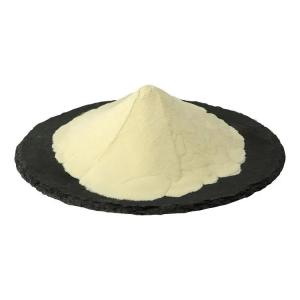News list
News Center
Hot Product
News
Educational focus on phosphoric acid nutrition
Time:2025-10-13
1. Introduction
Phosphoric acid, a compound containing phosphorus, hydrogen, and oxygen, plays an important role in both food science and nutrition education. While it is primarily known as a food additive and acidity regulator, its nutritional significance lies in its contribution to phosphorus intake, an essential mineral required for numerous physiological processes. Understanding phosphoric acid from an educational perspective helps learners grasp its role in the body and in the broader context of food chemistry.
2. Understanding Phosphorus in Human Nutrition
Phosphorus is a vital nutrient involved in bone formation, cellular energy transfer (ATP), and the maintenance of pH balance in body fluids. In the human diet, phosphorus is naturally present in protein-rich foods such as meat, fish, dairy, and legumes. Phosphoric acid serves as an additional, though often minor, dietary source of phosphorus when used in processed foods and beverages.
3. Sources of Phosphoric Acid in the Diet
In food production, phosphoric acid is commonly added to soft drinks, processed cheeses, and certain baked goods. It acts as an acidity regulator and flavor enhancer. From an educational standpoint, it is important to distinguish between naturally occurring phosphorus in foods and phosphorus derived from additives such as phosphoric acid. Students studying nutrition should recognize that the body absorbs both forms, but excessive intake from processed sources may not always align with balanced dietary goals.
4. Educational Importance in Nutrition Curriculum
Teaching about phosphoric acid offers valuable opportunities to integrate chemistry, food technology, and nutrition science. Students can learn how food additives influence taste, texture, and preservation, while also discussing how chemical forms of nutrients impact metabolism and health. This interdisciplinary topic helps learners appreciate the link between industrial food processing and nutritional outcomes.
5. Analytical and Experimental Learning Opportunities
In educational settings, phosphoric acid can be studied through laboratory experiments, such as pH measurement, titration, or mineral quantification. These hands-on activities allow students to understand acid-base balance, buffering capacity, and the role of phosphorus compounds in biochemical reactions. Such exercises bridge theoretical nutrition with practical food science.
6. Responsible Use and Dietary Awareness
Nutrition education should emphasize moderation and awareness when it comes to phosphorus-containing additives. While phosphoric acid is safe within regulated limits, overreliance on highly processed foods can lead to imbalances in nutrient intake. Educational programs can promote informed food choices that favor natural, whole-food sources of phosphorus.
7. Conclusion
Phosphoric acid occupies a unique position at the intersection of food chemistry and nutrition education. By exploring its chemical nature, dietary relevance, and role in food formulation, students can gain a comprehensive understanding of how industrial practices connect to nutritional science. Educators can use phosphoric acid as a teaching example to promote critical thinking about modern diets, ingredient awareness, and sustainable nutrition practices.
Phosphoric acid, a compound containing phosphorus, hydrogen, and oxygen, plays an important role in both food science and nutrition education. While it is primarily known as a food additive and acidity regulator, its nutritional significance lies in its contribution to phosphorus intake, an essential mineral required for numerous physiological processes. Understanding phosphoric acid from an educational perspective helps learners grasp its role in the body and in the broader context of food chemistry.
2. Understanding Phosphorus in Human Nutrition
Phosphorus is a vital nutrient involved in bone formation, cellular energy transfer (ATP), and the maintenance of pH balance in body fluids. In the human diet, phosphorus is naturally present in protein-rich foods such as meat, fish, dairy, and legumes. Phosphoric acid serves as an additional, though often minor, dietary source of phosphorus when used in processed foods and beverages.
3. Sources of Phosphoric Acid in the Diet
In food production, phosphoric acid is commonly added to soft drinks, processed cheeses, and certain baked goods. It acts as an acidity regulator and flavor enhancer. From an educational standpoint, it is important to distinguish between naturally occurring phosphorus in foods and phosphorus derived from additives such as phosphoric acid. Students studying nutrition should recognize that the body absorbs both forms, but excessive intake from processed sources may not always align with balanced dietary goals.
4. Educational Importance in Nutrition Curriculum
Teaching about phosphoric acid offers valuable opportunities to integrate chemistry, food technology, and nutrition science. Students can learn how food additives influence taste, texture, and preservation, while also discussing how chemical forms of nutrients impact metabolism and health. This interdisciplinary topic helps learners appreciate the link between industrial food processing and nutritional outcomes.
5. Analytical and Experimental Learning Opportunities
In educational settings, phosphoric acid can be studied through laboratory experiments, such as pH measurement, titration, or mineral quantification. These hands-on activities allow students to understand acid-base balance, buffering capacity, and the role of phosphorus compounds in biochemical reactions. Such exercises bridge theoretical nutrition with practical food science.
6. Responsible Use and Dietary Awareness
Nutrition education should emphasize moderation and awareness when it comes to phosphorus-containing additives. While phosphoric acid is safe within regulated limits, overreliance on highly processed foods can lead to imbalances in nutrient intake. Educational programs can promote informed food choices that favor natural, whole-food sources of phosphorus.
7. Conclusion
Phosphoric acid occupies a unique position at the intersection of food chemistry and nutrition education. By exploring its chemical nature, dietary relevance, and role in food formulation, students can gain a comprehensive understanding of how industrial practices connect to nutritional science. Educators can use phosphoric acid as a teaching example to promote critical thinking about modern diets, ingredient awareness, and sustainable nutrition practices.


 CN
CN





